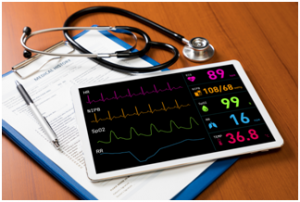How IoT Medical Devices Are Improving Patient Engagement
Most patient care takes place outside of a provider’s office or medical facility. Patients are expected to take medication as prescribed, report improvement or worsening of symptoms, and take steps to support their own health and well-being. Following doctors’ orders in this manner is just a part of the overall concept of patient engagement, but it’s a very important idea in healthcare today.

Once upon a time, patients were passive recipients of healthcare; that is, they would see a doctor, he or she would decide the best course of treatment, and order that treatment with little to no patient involvement. Today, that paradigm is shifting, and patients expect — and are expected to — be an active part of their own healthcare. Patients are actively involved with their providers, learning about their health, developing treatment plans, and participating in their own healthcare. The concept of patient engagement has become a major priority for many providers, who are consistently on the lookout for ways to more effectively engage their patients.
While there are any number of methodologies in use to support this goal, the Internet of Things, and connected medical devices are showing a great deal of promise as tools to support and improve patient engagement. From wearable trackers and smartphones to connected medical devices and mobile health applications, the IoT is not only giving provides greater insight into their patients’ health but also offering new ways for them to engage with their patients to create the best possible outcomes.
The Benefits of the IoT for Healthcare
With more than a third of connected devices being used in healthcare, there are clearly some benefits. Most of those benefits can be categorised into four major areas.
- Preventive care. Using monitoring devices that provide data in real time, physicians can make more effective diagnoses and recommend more effective treatments. For instance, a connected blood glucose monitor will reveal spikes in blood sugar that could indicate a potentially dangerous problem, and spur interaction to prevent harm.
- More Personalized Care. Connected devices allow providers to give their patients more personalized care that is based on their health on an ongoing basis, not just a snapshot of information collected during a single visit. When doctors have more information, they can have more in-depth conversations with patients and make more informed recommendations, which helps patients feel more supported and understood.
- Simplified Care. One reason for a lack of patient engagement is that many patients find access challenging. Calling the office for an appointment, waiting for a call back, waiting on hold to refill a prescription — all are common barriers to patients, who may become frustrated and not get the service they need. IoT and mobile health solutions remove some of these barriers and make access more efficient; for instance, an app that allows patients to schedule appointments and request refills, and sends reminders via email or text can simplify the process and keep patients compliant.
- Improved Communication
Finally, the IoT can improve communication between patients and providers. Secure emailing and text messaging via mobile health apps, for instance, or the ability for patients to add information into EHRs can open the lines of communication and create stronger partnerships.
By using these tools, providers can engage in more effective care planning, while patients feel like they have more control over their healthcare, and are more motivated to remain involved.
What’s on the Horizon
Many of the IoT developments in healthcare are coming in the form of monitors, from wearable devices that give doctors real-time data about specific vitals, to in-home monitors and devices that connect wirelessly and contain 16-bit processors to help effectively collect and analyze data.

One technology that is showing potential to improve patient engagement at home are devices like Amazon Echo and Google Home, which use machine learning and a cloud infrastructure to provide a variety of services in the home. Patients can use them to receive updates, alerts, and reminders, as well record health information in routine assessments or surveys. Providers are looking at ways to harness the power of these devices to be used as educational tools as well, to further boost engagement.
Application development is another key part of boosting patient engagement via the IoT. Applications that can connect wirelessly to wearable devices and in-home monitors, while also opening the lines of communication to providers are becoming more advanced, and more commonplace, and are likely to become an important part of the future of healthcare.
The IoT is already proven to reduce hospital readmissions via data analysis and early intervention. It only makes sense, then, that the healthcare industry is looking at ways to harness that power to improve patient engagement — and improve overall outcomes while reducing costs.


